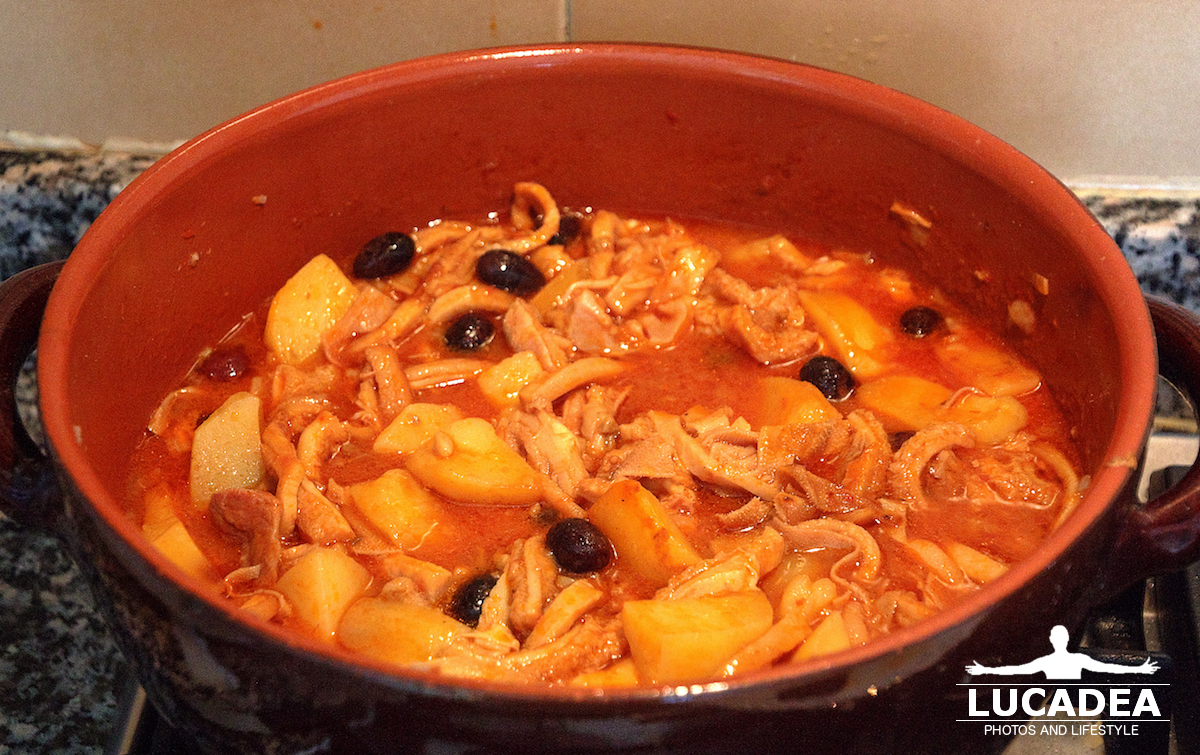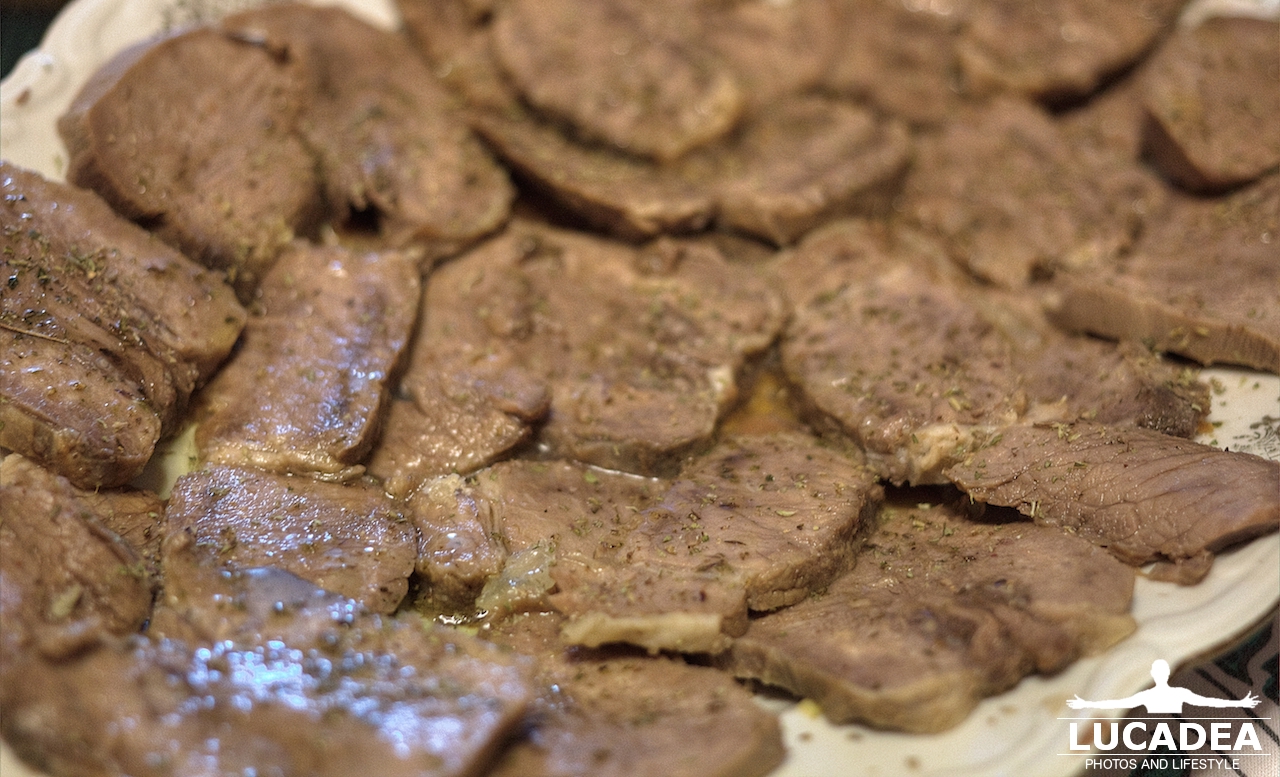Vietnamese cuisine: chicken gizzard, satay and sweet and sour soup, the recipe.
While shopping at the supermarket, a few days ago, I discovered that they had chicken gizzard and I decided to buy it to make an excellent dish together with a sweet and sour salmon soup with tomatoes.
If you don't know what gizzard is, I invite you to look it up on Wikipedia.
The rice is served with pan-fried chicken gizzard, a spicy satay and a sweet and sour salmon soup.
Click vào đây để đọc bằng tiếng việt!
If you are curious about this recipe of mine or Vietnamese food in general, write me a message. comment or go to the bottom of the site to read what other visitors have written.
For the salmon soup I refer you to one of the previous posts in which I have already explained how to prepare it (here)
Satay
How to make lemongrass satay with hot chili pepper. I'll put the photo below.
Ingredients:
– fresh chili pepper;
– fresh lemongrass;
– tomatoes;
– garlic cloves;
– red onions;
– spices: olive oil, sugar, salt, fish sauce, annatto seeds, pepper and paprika.
Depending on whether you want to eat more chili pepper or lemongrass, more onion or garlic, you can prepare the ingredients according to your preferences.
Preparation:
Chop the lemongrass into small pieces, then put it in a blender with the olive oil and then put it in a bowl.
Also blend some tomato and chilli together, then put in another bowl.
Now put the red onion and garlic together in a pan, add the olive oil and sauté until the onions and garlic are fragrant and firm; then continue adding the chopped lemongrass first with the tomato and chilli mixture and sauté everything in the same pan. Leave to brown for about 7-10 minutes, then add the spices in turn: sugar, salt, seasoning, paprika.
Taste again and add some fish sauce (to taste).
Then sauté the mixture again in the pan for another 7-10 minutes and turn off the heat, sprinkle with pepper and mix well.
Once cooled you can put it in a container in the refrigerator and use gradually.
Note that to keep the mixture for a long time, you need to add a lot of cooking oil, immerse in the mixture and fry very well. Add plenty of sugar and spices to obtain a delicious sweet-savory mixture.
I use the satay that I prepare to accompany many dishes but also to season some Italian foods such as salami or pasta with ragù to make everything fragrant with lemongrass and spicy with chili pepper. Spicy but not too much because we added tomatoes!
Chicken gizzard
Ingredients:
– 100g chicken gizzards (bought at Coop)
– Spring onion and coriander, thinly sliced
– 2 cloves of garlic and 1 red onion: thinly sliced for frying.
– Seasoning: 1 tablespoon soy sauce; 1/3 teaspoon sugar; 1 teaspoon seasoning; spicy satay with lemongrass and chilli (homemade); paprika; pepper.
Preparation:
After purchasing, the chicken gizzards should be washed with white salt, then sliced as desired and boiled in boiling water and rinsed with cold water so that they are crispy.
Heat oil in a pan, add sliced onion and garlic and fry until fragrant. Pour in the chicken gizzard, stir quickly over high heat until the chicken gizzard is lightly browned.
Then add spices: soy sauce, seasoning, sugar and satay with lemongrass and chili and fry for another 3-5 minutes, then add chopped spring onion and coriander and then turn off the heat.
After turning off the heat, add pepper and chili powder, mix well.
Remove the chicken gizzard on a plate, eat it hot with rice and soup.
Crispy chicken gizzards are paired with the flavor of lemongrass satay chili, shallots and coriander; the spicy taste of chili quickly warms the hearts of friends at the table in these cold days.
When you are tired of eating either meat or fish, you can change the taste of your meal with a dish of chicken gizzards.
The dish is easy to make but brings a new sensation to the family meal tray, want to try it?
Cơm ăn cùng với mề gà xào cay và canh cá hồi nấu chua.
Món: mề gà xào cay
Nguyên liệu:
– 100g mề gà (mua ở Coop)
– Hành lá và ngò rí thái mỏng
– 2 tép tỏi và 1 củ hành tím: thái mỏng để phi thơm.
– Gia vị: 1 muỗng canh nước tương; 1/3 muỗng cà phê đường; 1 muỗng cà phê hạt nêm; sa tế cay sả ớt (tự làm); ớt bột; tiêu.
Cách làm:
Mề gà sau khi mua về cần rửa sạch với muối trắng, sau đó thái vừa ăn và trụng qua nước sôi và xả lại bằng nước lạnh cho mề giòn.
Làm nóng dầu trong chảo, cho hành tím và tỏi đã thái mỏng ở trên vào phi thơm. Trút mề gà vào, đảo nhanh tay trên lửa to cho miếng mề gà hơi xém cạnh.
Sau đó cho các gia vị ở trên vào: nước tương, hạt nêm, đường và sa tế sả ớt xào thêm 3 – 5 phút rồi cho hành lá và ngò rí đã thái ở trên vào đảo thêm lần nữa rồi tắt bếp. Sau khi tắt bếp cho thêm tiêu và ớt bột vào, đảo đều là xong.
Lấy mề gà ra đĩa, ăn nóng rất ngon với cơm và canh.
Mề gà dai giòn dậy lên hương thơm của sa tế sả ớt, hành lá và ngò rí, vị cay xuýt xoa của ớt khiến người bạn nhanh chóng ấm áp trong những ngày lạnh này.
Những khi thấy ngán với thịt, cá, bạn có thể đổi vị cho bữa cơm bằng món ăn từ mề gà. Món ăn dễ làm nhưng đem lại cảm giác mới lạ cho mâm cơm gia đình, bạn có muốn thử không?
Canh chua cá hồi: nguyên liệu có cá hồi, cà chua, hành lá và gia vị, nước cốt chanh. Món này đơn giản nên không nêu cách nấu nhé ạ.
Cách làm sa tế cay sả ớt:
Nguyên liệu: ớt tươi, cây sả tươi, cà chua bỏ ruột, củ tỏi, củ hành tím, ớt bột.
Gia vị: dầu ăn, đường, muối, nước mắm, hạt nêm, tiêu.
Tuỳ vào bạn muốn ăn ớt nhiều hay sả nhiều, hành nhiều hay tỏi nhiều mà bạn làm cho thành phần theo sở thích nhé.
Cách làm:
Sả thái nhỏ, sau đó cho vào máy xay nhuyễn, sau đó cho dầu ăn vào xào thơm và săn lại rồi cho ra bát.
Cà chua và ớt trái xay nhuyễn cùng, sau đó cho ra bát.
Hành tím và tỏi xay nhuyễn cùng, sau đó cho dầu ăn vào xào đến khi hành tỏi thơm và săn lại, rồi tiếp tục cho sả đã xào ở trên cùng với hỗn hợp cà chua ớt trái vào xào đảo đều. Xào tầm 7-10 phút hỗn hợp trên, sau đó cho lần lượt các gia vị vào: đường, muối, hạt nêm, ớt bột. Nêm nếm lại rồi cho thêm nước mắm cho có mùi thơm. Sau đó xào hỗn hợp săn và quẹo lại là tắt bếp (xào thêm tầm 7-10 phút nữa), rắc thêm tiêu và đảo đều, để nguội và cho vào hộp đựng trong tủ mát dùng dần.
Chú ý để hỗn hợp để được lâu thì phải cho dầu ăn thật nhiều, ngập trong hỗn hợp và phải xào thật săn (khô nước), đồng thời cho đường và gia vị nhiều để có hỗn hợp mặn ngọt thơm ngon.
Sa tế mình làm để ăn với rất nhiều món, ăn cùng salami hay ăn cùng bún bò, làm nước chấm…cực kỳ ngon, thơm mùi sả và cay của các loại ớt. (Cay nhưng không quá cay vì chúng ta đã cho cà chua vào)







